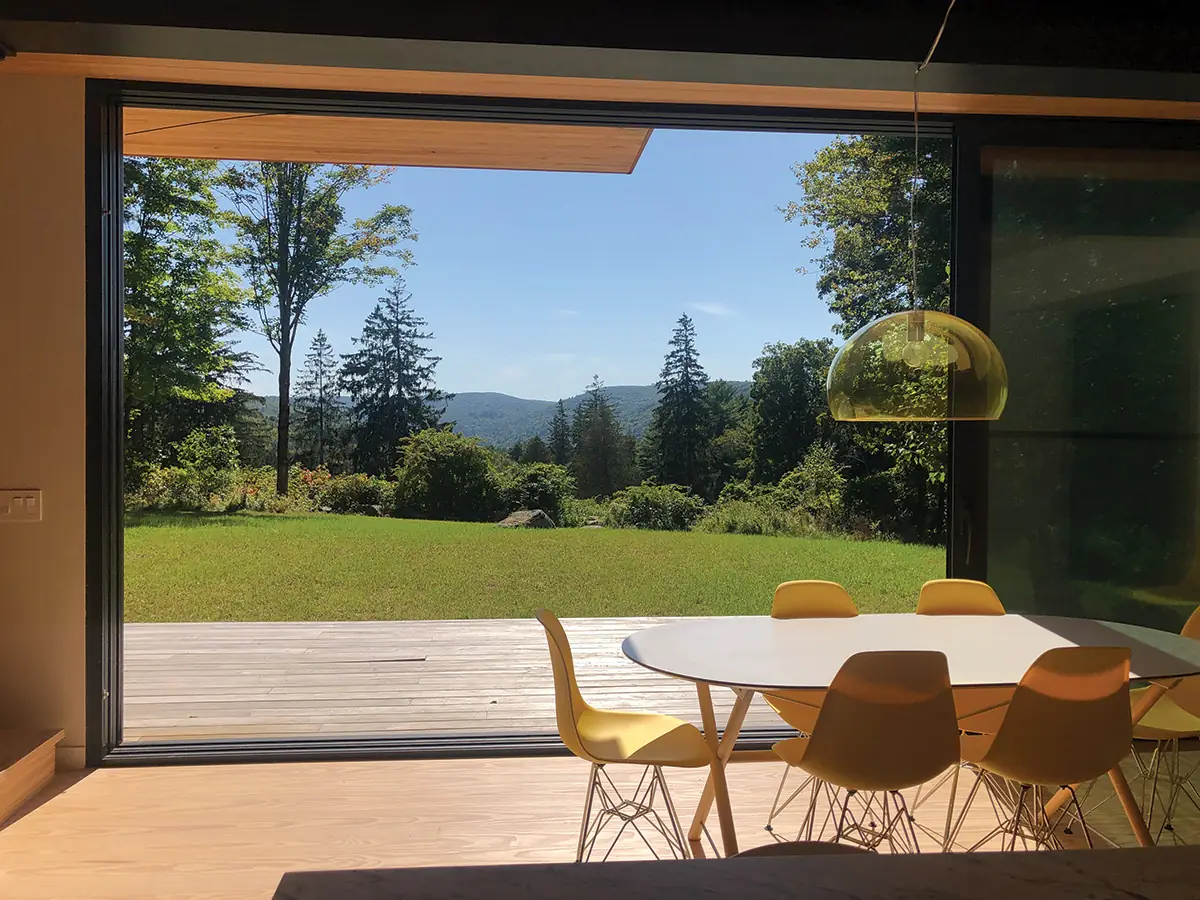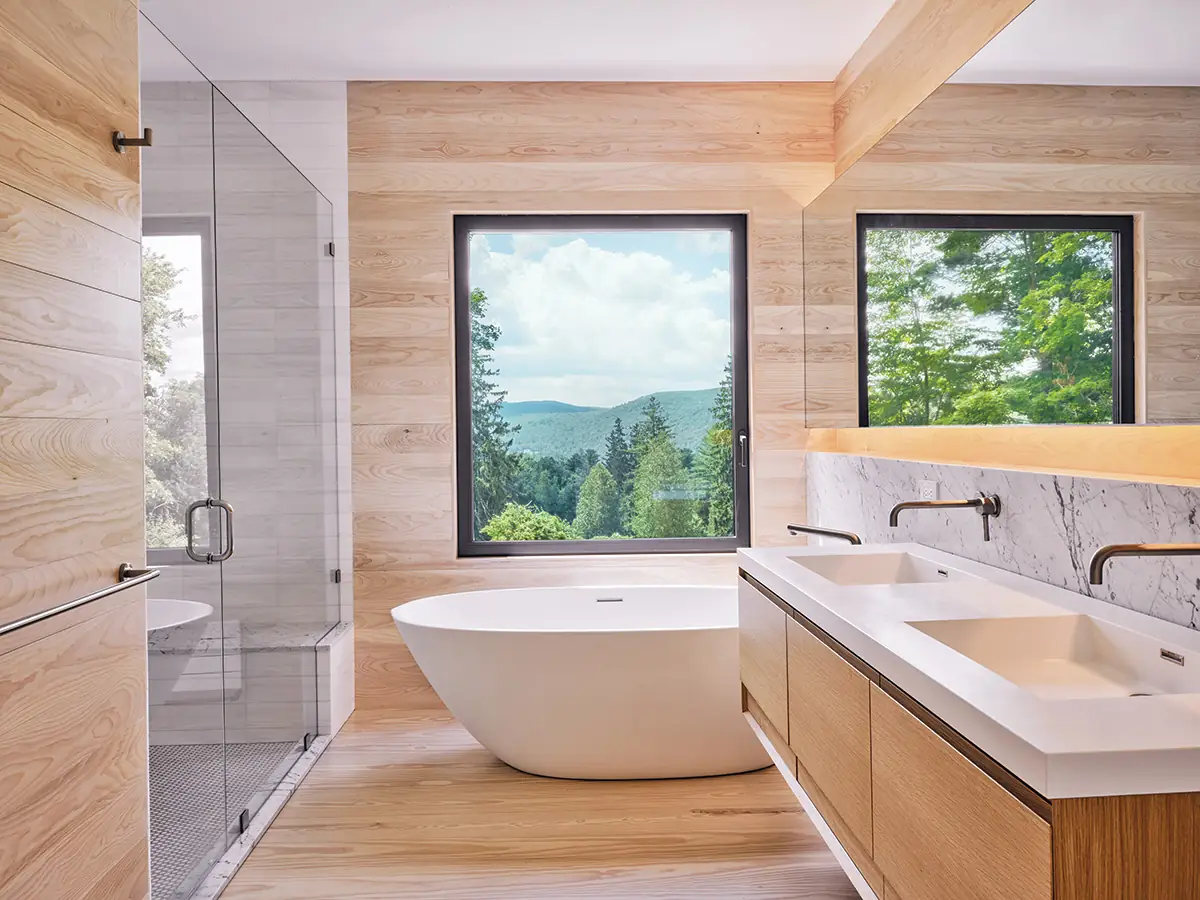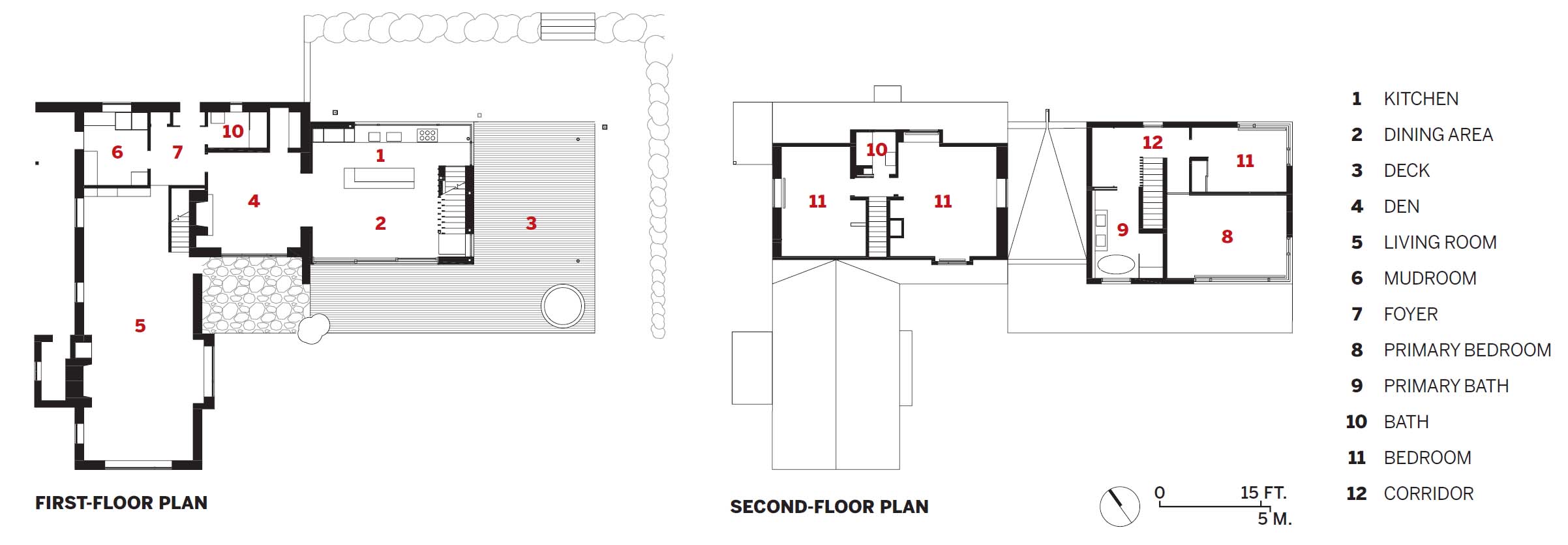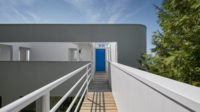After purchasing a 1940s stone cottage near the base of Mohawk Mountain Ski Area in Connecticut, Sarah Jefferys, a New York–based architect, renovated it as a second home, which she and her family share with that of a lifelong friend who is a co-owner. The surprising transformation not only brings the English-style cottage up to 21st-century standards—it includes an unexpectedly modern wing.
The new construction encompasses a combined ground-floor kitchen and dining room in a discrete cypress-clad volume big enough to accommodate both families, should their stays overlap. Sleeping quarters occupy the addition’s second level, which cantelevers to the southeast. “Somewhat inspired by dogtrot houses, which had a central breezeway dividing the house,” Jefferys says, the kitchen abuts the original house’s den to link new and old.

The kitchen’s work zone looks toward a more wooded landscape (top of page), while the dining area (above) opens to a deck and a pastoral scene. Photo © Morten Smidt, click to enlarge.
Both structures are celebrations of nature. But, whereas the cottage appears plucked from the book plates of a version of “Hansel and Gretel,” Jefferys’s addition includes large apertures that immerse occupants in the landscape. The kitchen features undercounter storage along one window wall to prevent cabinetry from competing with the uphill view. (A waterfall-style marble-topped island separates the room’s work and dining areas.) The architect also took advantage of the second floor’s vistas, placing a shared bathroom’s freestanding tub immediately below a south-facing window that frames forested hills. “A long-distance view was very important to us when picking out a house,” Jefferys says of the tub’s placement. “It is sumptuous to soak in a bubble bath while gazing out to the mountains beyond.”

The upstairs bathroom (opposite) window frames a view to Coltsfoot Mountain. Photo © Morten Smidt
The landscape comes inside as well, thanks to Jefferys’s choice of finishes. Locally sourced wide-plank pine floors were installed throughout the house, and Jefferys used the highly figured wood for the kitchen cabinets as well as the stairwell of the new wing; she clad the bathroom in pine shiplap. The material rigor further distinguishes the contemporary intervention from the cottage, where the material palette is much more varied.
Yet Jefferys might have exercised her greatest respect for nature in the elements of the renovation and expansion that cannot be seen. Since launching her eponymous firm in 2001, the architect has steadily recalibrated her work toward Passive House performance. Here she employed thermal bridge–free construction, triple-pane windows, and heat recovery from appliances and occupants, among other sustainability techniques. The finished house aims to use 70 percent less heating and cooling than a merely code-compliant American building—emblematic of her progress toward becoming an entirely net-positive firm.
Click plans to enlarge

Credits
Architect:
Sarah Jefferys Architecture + Interiors
Engineer:
Joseph Marcetti
General Contractor:
Jim Terrall Construction
Consultant:
XS Space
Clients:
Sarah Jefferys, Stewart Osborne
Size:
3,400 square feet (house)
Cost:
$790,000 (renovation and addition)
Completion Date:
June 2021
Sources
Kitchen Cabinetry:
Stylecraft
Countertop:
Hindustan
Bath Fixtures:
Wetstyle, AF Supply, DaVinci, Hansgrohe, Zucetti
Windows and Doors:
Ikon





Post a comment to this article
Report Abusive Comment